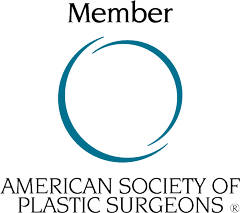What is a Breast augmentation?
Dr. Ricardo Rodriguez has performed hundreds of breast augmentation procedures, helping patients from Baltimore and throughout Maryland and Pennsylvannia enhance their shape and confidence.
A breast augmentation, or augmentation mammoplasty, enlarges your breasts using silicone or saline implants, or your own fat. This procedure can also reshape the breasts or make them more symmetrical. Asymmetry can result from natural anatomy, aging, or surgeries like lumpectomy or mastectomy.
While most patients focus on implant size, it’s important to consider the implant profile type (moderate, moderate plus, high profile, extra high profile) before deciding on volume. You should also discuss capsular contracture complication rates during your consultation.
The average capsular contracture rate for Allergan and Mentor implants over the years has been 10-15%, but my rate is 5%. Motiva is a new manufacturer of implants in the USA, and has data that their capsular contracture rate is much less than 5%.
This is an outpatient procedure performed exclusively under IV sedation. We use IV sedation instead of general anesthesia to significantly reduce the risk of deep vein thrombosis (DVT) and pulmonary embolism. Most patients take one week off from work.
There are many decisions that a Breast Augmentation patient needs to make before the procedure. My patients try on different breast implants at their consultation. They decide on Implant type, size, profile, incision location, and whether they need a Breast Lift or not. I have a range of sizes and profiles in my office to help with the decision.
If patients are concerned about capsular contracture, they can choose Motiva implants for the lowest published rate of capsular contracture.
Why choose Dr. Rodriguez for Breast Augmentation surgery?
- Dr. Rodriguez has been performing Breast Implant surgery for 30 years, and has performed the surgery for both cosmetic and reconstructive needs
- Dr. Rodriguez helps you select the size, profile, and incision location for your implants
- Patients have a choice of implant manufacturer (Allergan, Mentor, Motiva)
- Dr. Rodriguez uses IV sedation instead of General Anesthesia for a faster recovery and less DVT risk
- Some patient have the alternative to do Fat Transfer to the Breast instead of implants
What problems does a Breast augmentation address?
Most women seek breast augmentation for one of four reasons:I've always felt that my breasts were not in proportion to my body
Use AI tools to summarize this page:
- Loss in breast size and skin tone after childbirth
- A desire for larger breasts to achieve better body balance
- Correction of breast asymmetry or tuberous breast deformity
- Reconstruction after mastectomy or lumpectomy
Silicone Implants: Safety and History
In 1992, the FDA placed a ban on silicone breast implants for cosmetic use while they investigated safety concerns. During the 14-year ban, only reconstructive patients or those with specific issues like capsular contracture or asymmetry could receive silicone implants as part of controlled studies. These patients were followed for five years to track any complications.
After extensive research, the FDA found no evidence linking silicone implants to disease, and in 2006, silicone implants were re-approved for cosmetic use. Studies confirmed that women with silicone implants faced no higher risk of disease than the general population, proving them to be medically safe. Dr. Rodriguez has worked with silicone implants both before and after this ban and continues to recommend them for their natural feel and proven safety.
Breast Augmentation vs. Breast Lift
Breast augmentation alone won’t correct sagging. If your nipple is below the inframammary fold (IMF), you may need a breast lift with your implants to avoid downward-pointing nipples.
I recently underwent breast augmentation surgery plus lift with Dr Rodriguez, and I truly couldn't be any happier with the results. From the consultation to the surgery, everything was smooth and professional. Highly recommend!
Stacey G.
How is a Breast augmentation performed?
At our QuadA-accredited surgery center in Baltimore, breast augmentations are performed exclusively under IV sedation. IV sedation is safer than general anesthesia because IV sedation has lower risks of DVT and pulmonary embolism. Additionally, IV sedation results in quicker recovery and less post-op nausea.
Surgical Procedure:
- Implant Placement: Implants are usually placed below the muscle. You’ll choose the insertion point during your pre-op consultation, so you’ll know where the incision will be.
- Fat Transfer: Alternatively, you can opt for fat transfer to increase your breast size by about one cup, using fat extracted from your stomach or flanks.
Scar Locations
During the procedure, a small incision is made to insert the implant. There are three main options for incision sites:
- Inframammary incision: Along the fold under the breast. This is the most common choice as it allows for good control over implant placement and leaves a well-hidden scar.
- Infraareolar incision: Around the lower edge of the areola, where the darker skin helps disguise the scar.
- Axillary incision: In the armpit, leaving no scars on the breast itself.
Each option has its advantages, and you will discuss which one is best for you during your consultation.
Excellent service, I had a procedure for breast augmentation and I’m in love with the results. My recovery was excellent — not extremely painful, no scars, perfect size. The doctor and the staff are very kind.
Marielys R.
What are the preoperative requirements?
Before surgery, you’ll need to:
- Get medical clearance (H&P and CBC blood test) within 30 days of surgery.
- Stop smoking at least two weeks before surgery.
- Avoid aspirin and herbal supplements for two weeks before surgery.
- Schedule a pre-op appointment to finalize implant size and review the surgical plan.
- Fill prescriptions before the day of surgery.
- Do not eat or drink after midnight the night before surgery.
Key Decisions Before Surgery:
- Silicone or saline implants
- Implant manufacturer: Allergan, Mentor, or Motiva
- Implant size (cc’s)
- Under or over the muscle placement
- Incision location (inframammary, infraareolar, or axillary)
- Implant profile (moderate, moderate plus, high, extra high)
- With or without a breast lift
- Is internal bra support needed? (Durasorb or GalaFLEX may be recommended to provide additional support for larger implants or thinner breast tissue)
What is Breast augmentation Post-Op recovery like?
After your surgery, expect pain and discomfort, which can be managed with pain medication and an Exparel injection, which keeps the area numb for 2-3 days.
Pain Reduction After Surgery
We use either Pain Pumps or Exparel for pain control after surgery. Both options provide effective pain relief for several days, helping to keep the area numb and reduce discomfort during the early stages of recovery.
Post-Op Instructions:
- Bed rest for the first two days.
- Drink plenty of fluids.
- Take one week off work.
- No driving for one week.
- Wear a breast bandeau or ace wrap for the first week.
- Drains will be used for 2-3 days and removed at your first post-op appointment.
- Some swelling may last for 4-6 weeks.
- Lower body exercises can resume at 10 days; upper body at 4-5 weeks.
- Post-op appointments: day 2, one week, one month, four months.
What are the risks and possible complications?
While most women have no issues, possible complications include:
- Capsular contracture
- Implant deflation
- Seroma (fluid buildup)
- Implant wrinkling or leakage
- Asymmetry
- Undesirable scarring
Capsular Contracture Rates
Capsular contracture affects 10-15% of breast augmentation patients. However, my rate is 5%, which is well below average.
How much does Breast augmentation with silicone implants cost in Baltimore?
Here are the 2025 prices for Breast Augmentation with silicone implants from Allergan, Mentor, and Motiva:
| Type of Breast augmentation | 2025 Cost |
|---|---|
| Breast Aug with silicone implants (no lift) | $6,000 |
| Breast Aug with Motiva silicone Implants | $6,400 |
| Breast Aug with saline implants (no lift) | $5,200 |
Total costs include the surgeon's Fee, operating room, anesthesia fee (board-certified anesthesiologist), implants (saline or silicone), post-op pain control, and all follow-up office visits.
Can I finance my Breast augmentation surgery?
Yes, we work with several finance companies for affordable, monthly payments. Please call the office at 410-494-8100 or see our financing section for more information.
Dr. Rodriguez is amazing!!!! He changed my life for sure. My breast are perfect to me thanks to him. If I get any more work done, it’ll be with him.
Katie Macness
Dr. Rodriguez: Trusted Breast Lift Surgeon in Baltimore
With more than 1,000 breast procedures performed, Dr. Ricardo Rodriguez brings a combination of experience, artistry, and safety to every breast lift. He uses the vertical scar technique to lift and reshape the breast while minimizing visible scarring — an approach he has refined since training with the technique’s originator in France.
All surgeries are performed in our Quad A-accredited outpatient center, with IV sedation administered by board-certified anesthesiologists for added comfort and safety.
All patients receive direct access to Dr. Rodriguez’s cell phone post-surgery for personalized care and support. He is fluent in English, Spanish, and French to help ensure every patient feels heard, understood, and supported from consultation to recovery.
Ready to explore what's possible?
BOOK A COURTESY CONSULT TODAY!
We look forward to helping you look and feel your best,

Board Certified Plastic Surgery, ASPS Member
NOTICE
Patients depicted in our before and after galleries have provided their written consent to display their photos online. Every patient is unique, and surgical results may vary. Please contact us if you have any questions.

